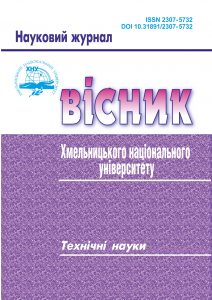THE INFLUENCE OF ENVIRONMENTAL REACTION ON THE RATE OF WATER DEOXIDATION BY SODIUM SULFITE IN THE PRESENCE OF IRON IONS
DOI:
https://doi.org/10.31891/2307-5732-2023-329-6-77-83Keywords:
corrosion, oxygen depolarization, water deoxygenation, catalyst, water purificationAbstract
At high temperatures in the presence of oxygen, corrosion of metals is quite significant, even for stainless steel, brass and copper. The use of inhibitors in these conditions is not only ineffective, but also not permissible, due to the possibility of sediment formation. Therefore, the only way out in this case is effective water deoxygenation.
In this work were investigated the processes of water deoxygenation under static conditions with sodium sulfite in the presence of iron ions. Sodium sulfite was used at a concentration of 200 mg/dm3, iron ions (in the form of iron sulfate) was used at a concentration of 0.2 and 0.5 mg/dm3. The acidity of the medium varied in the range from pH = 3.0 to pH = 9.0. In general, the process of deoxidation of water in the presence of iron will take place much faster than without its use, which is evident from the catalytic effect, which in this study is contained in the entire range of used pH variations of the medium. The rate of oxygen reduction was significantly increased due to the addition of an iron catalyst, especially at low pH values of the medium, and on the contrary, it decreases with an increase in the pH of the medium. Effective indicators of oxygen removal were obtained: at static conditions, a container with a volume of 1.5 was completely deoxidized in 70 seconds at pH=3. At pH = 4.5, the degree of oxygen recovery after 70 seconds reached 86.7%, at pH = 7.0 - 76.7%, and at pH = 9.0 - 63.3%. This effect can be explained by an increase in the properties of iron as an oxidant with acidification of the environment, which contributes to the reduction of sulfate and the transition of iron to the Fe2+ form. It is obvious that the presence of Fe2+ ions contributes to the reduction of oxygen. At high pH, iron is easily oxidized to Fe3+, but under these conditions, the reduction of oxygen slows down.

